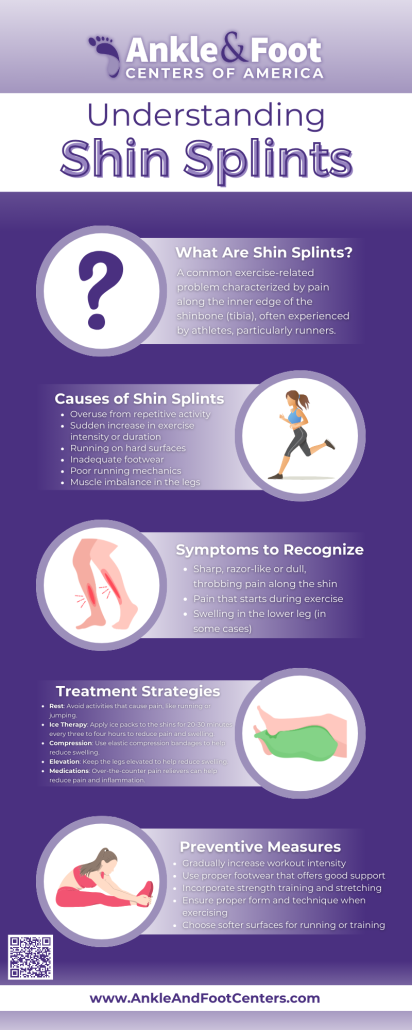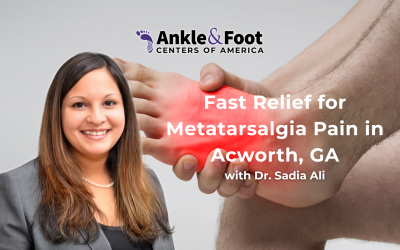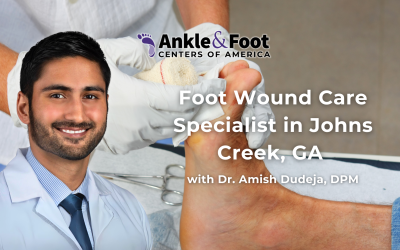Table of Contents
Introduction
Experiencing sharp, recurring pain in the shins can profoundly affect anyone engaged in regular physical activity, not just athletes. Known medically as medial tibial stress syndrome, shin splints are a common yet often misunderstood condition that can significantly hinder mobility and quality of life. Understanding the nuances of shin splints is crucial for effective management and recovery.
In Atlanta, Dr. Weinstein is known for his expertise in diagnosing and treating this painful condition. He creates customized treatment plans, establishing himself as the top specialist for those suffering from shin splints.
So, if you’re looking for a “shin splints doctor,” wondering “what doctor to see for shin splints,” or in need of expert advice on “shin splints treatment,” you’ve come to the right place. Join us as we delve into how Dr. Weinstein can help you regain your active lifestyle, free from pain.
What are Shin Splints?
 Shin splints, medically known as medial tibial stress syndrome, are a common ailment among athletes, dancers, military recruits, and others who engage in vigorous physical activities. This condition is characterized by pain along the inner edge of the shinbone (tibia) where muscles attach to the bone. The discomfort can range from a dull ache to a sharp, intense pain, often exacerbated by physical activity.
Shin splints, medically known as medial tibial stress syndrome, are a common ailment among athletes, dancers, military recruits, and others who engage in vigorous physical activities. This condition is characterized by pain along the inner edge of the shinbone (tibia) where muscles attach to the bone. The discomfort can range from a dull ache to a sharp, intense pain, often exacerbated by physical activity.
What Causes Shin Splints?
The primary cause of shin splints is overuse or excessive force exerted on the shinbone and the connective tissues that attach muscles to the bone. This overuse typically results from sudden increases in physical activity—whether in intensity, duration, or frequency—without adequate conditioning.
Common Risk Factors Include:
- Running, especially on hard surfaces or hilly terrain.
- Inadequate footwear that doesn’t provide sufficient support or cushioning.
- Poor alignment or biomechanical irregularities, such as flat feet or overpronation.
Who is at Risk?
While anyone can develop shin splints, they are particularly prevalent among:
- New runners or those who have recently intensified their running regimen.
- Athletes involved in sports with sudden stops and starts, such as basketball or tennis.
- Participants in dance or military training, where the intensity of leg workouts is high.
What are the Symptoms of Shin Splints?
Recognizing the symptoms of shin splints early is key for a timely diagnosis and effective treatment. Dr. Weinstein highlights the importance of early detection to prevent the condition from worsening and to minimize disruption to daily activities. Below are the primary symptoms associated with shin splints:
Pain Along the Shinbone: The hallmark symptom is a throbbing, aching pain along the front or inside of the lower leg, typically beginning during or after intense activities like running.
Swelling in the Lower Leg: Some individuals might notice mild swelling near the shinbone, though this isn’t always present.
Pain that Worsens with Activity: Pain may initially occur at the start of an activity and subside, only to intensify after the activity ends.
Numbness and Weakness: In severe cases, associated swelling may compress nearby nerves, causing numbness or weakness in the feet.
Dr. Weinstein advises seeking medical advice if you experience consistent pain that doesn’t improve with rest, or if swelling persists or worsens..
Impact on Daily Activities
Shin splints can significantly interfere with your daily activities, especially if your lifestyle or profession involves physical activity. The pain can become so severe that it limits your ability to perform even basic tasks like walking or standing for long periods.
With a focus on personalized care, Dr. Weinstein, a renowned shin splints doctor in Atlanta, provides comprehensive evaluations to not only diagnose shin splints but also to rule out other potential issues. His approach ensures that each patient understands their symptoms and receives the most effective shin splints treatment tailored to their specific needs. This detailed attention helps patients return to their normal activities with confidence and reduced risk of recurrence.

Dr. Weinstein’s Approach to Diagnosis
Dr. Weinstein’s diagnosis of shin splints is meticulous and patient-focused. Here’s a brief overview of how Dr. Weinstein diagnoses shin splints:
- Comprehensive Patient History: Dr. Weinstein begins with a detailed patient history to understand the onset of symptoms, exercise habits, recent changes in activity levels, and any past injuries. This helps to differentiate shin splints from other conditions like stress fractures or compartment syndrome.
- Physical Examination: Dr. Weinstein performs a careful examination of the lower legs, checking for tenderness along the shinbone, muscle strength, and flexibility. This helps to pinpoint the exact location and severity of the discomfort.
- Gait Analysis: Dr. Weinstein may observe the patient’s walking and running patterns. This analysis helps identify biomechanical issues that could contribute to shin splints, such as overpronation or inadequate stride.
- Imaging Tests: If necessary, Dr. Weinstein might order imaging tests like X-rays or an MRI to rule out fractures or other conditions that could mimic or exacerbate shin splint symptoms.
By integrating these diagnostic steps, Dr. Weinstein not only confirms the presence of shin splints but also uncovers any underlying issues that need to be addressed in the treatment plan. This thorough diagnostic process ensures that patients receive the most effective, customized treatment for their specific situation.
Treatment Options Offered by Dr. Weinstein
 Dr. Weinstein provides a comprehensive array of treatments for shin splints, each customized to the specific needs of his patients.
Dr. Weinstein provides a comprehensive array of treatments for shin splints, each customized to the specific needs of his patients.
- Initial Care: He recommends rest and applying ice to reduce inflammation and alleviate pain.
- Physical Therapy: Focuses on exercises that strengthen shin muscles and enhance flexibility.
- Orthotics: Prescribed for patients with biomechanical issues to relieve shin pressure.
- Exercise Modification and Education: Dr. Weinstein advises on routine adjustments to prevent further shin stress. He educates patients on proper exercise techniques and suitable footwear.
Why Dr. Weinstein is the Best Shin Splint Doctor in Atlanta
 Dr. Weinstein’s status as the top shin splint doctor in Atlanta stems from his extensive education, professional affiliations, and commitment to innovative treatments.
Dr. Weinstein’s status as the top shin splint doctor in Atlanta stems from his extensive education, professional affiliations, and commitment to innovative treatments.
Educational Background: He studied at the University of Florida, then at the Ohio College of Podiatric Medicine. His residency at Emory Northlake Regional Medical Center honed his expertise.
Professional Affiliations and Achievements: He is a member of the American Podiatric Medical Association and the Georgia Podiatric Medical Association. He is also a Fellow of the American College of Foot and Ankle Surgeons and teaches at The Podiatry Institute.
Innovative Contributions: As president of Osteon, Inc., he leads in designing surgical instruments, advancing podiatric medicine.
Hospital Affiliations: He works at several respected medical facilities, ensuring broad patient access.
Dr. Weinstein’s comprehensive approach combines the latest medical innovations with traditional treatments, tailored to individual needs, ensuring optimal outcomes.
Frequently Asked Questions About Shin Splints
 Q1: Why do I feel pain in my shin?
Q1: Why do I feel pain in my shin?
A1: Pain typically results from overstressing the muscles and tendons around your shinbone, often due to increased exercise intensity or frequency.
Q2: When should I see a doctor for shin pain?
A2: Consult a doctor if your shin pain persists despite rest, worsens during exercise, or affects your daily activities.
Q3: How do you treat shin pain?
A3: Treatment starts with rest and ice to reduce inflammation. Physical therapy is crucial, focusing on strengthening and stretching shin muscles. Orthotics may be recommended for biomechanical imbalances.
Q4: What can be mistaken for shin splints?
A4: Conditions like stress fractures, compartment syndrome, and vascular issues can mimic shin splints. Accurate diagnosis is crucial, highlighting the importance of specialized consultation.





